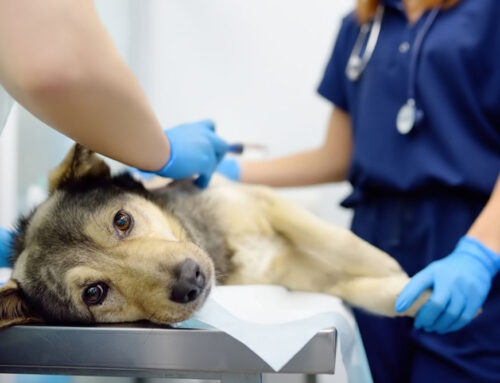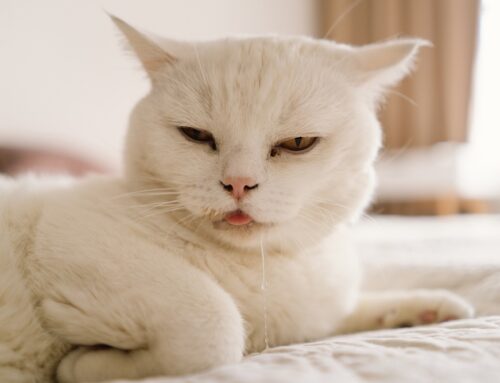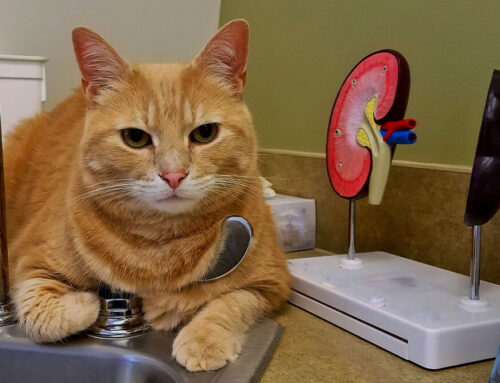If your pet has to undergo a procedure that requires anesthesia, such as a spay, neuter, or dental cleaning, you may be worried about their safety. While anesthesia always poses some risk, strict protocols help keep your four-legged friend safe and comfortable throughout an anesthetic procedure. Consider our skilled Southern Crossing Animal Hospital team’s 10 anesthesia safety rules to learn how you can help ensure your furry pal has a positive anesthesia experience and how we literally and figuratively hold your pet’s paw before, during, and after we administer anesthesia.
#1: You should keep your pet at a healthy weight
Obesity puts extra pressure on more than just your pet’s joints; the condition also adds stress to their heart and lungs, interfering with cardiovascular and respiratory function. Overweight pets experience an increased risk for anesthetic complications, so strive to keep your furry pal at an ideal weight.
#2: You should follow veterinary-procedure fasting guidelines
Typically, pets should fast for a specific period before a procedure to prevent complications during anesthesia. Fasting guidelines are based on your pet’s age, health status, and the procedure being performed. Adhering to these guidelines helps reduce your pet’s vomiting and aspiration risk during the anesthetic process.
#3: Our team conducts a preanesthetic veterinary evaluation
Before performing an anesthetic procedure, our team conducts a thorough preanesthetic evaluation. While some testing may be performed in advance, we typically conduct a physical examination, blood work, and other necessary diagnostic testing the morning of the procedure so we have the most current results. Understanding your pet’s overall health is key to determining the appropriate anesthesia protocol.
#4: Our team tailors an anesthetic protocol to your pet’s needs
Each pet is unique, and their response to anesthesia may vary. We tailor anesthetic protocols to suit your pet’s individual needs, considering factors such as age, breed, and overall health. We also account for the procedure being performed to ensure we have appropriate sedation and pain control on board.
#5: Our team places your pet’s intravenous catheter
Some medications can be administered under a pet’s skin (i.e., subcutaneous) into a muscle or a vein. However, medications administered through an intravenous (IV) catheter take effect most rapidly. If a pet develops an anesthetic complication, such as a dropping heart rate or blood pressure, we can administer lifesaving drugs through an IV catheter for immediate effect. An IV catheter also allows us to administer fluids before, during, and after anesthesia, which helps support your pet’s blood pressure and flush anesthetic agents from your pet’s body, enabling a quick anesthetic recovery.
#6: Our team places your pet’s endotracheal tube
An endotracheal (i.e., breathing) tube provides fresh oxygen and anesthetic gas to your pet throughout the procedure to ensure their tissues remain appropriately perfused with oxygen. An endotracheal tube also protects your pet’s airway from potential regurgitation or vomiting, as it blocks fluid and debris from passing down the trachea into the lungs.
#7: Our team monitors your pet during anesthesia
During your pet’s preanesthetic evaluation, we check their vital signs and obtain normal values that we use for comparison during anesthesia. Continuous monitoring of vital signs, such as heart and respiratory rate, blood pressure, oxygen saturation, and body temperature, is crucial for assessing your pet’s response to anesthesia and the procedure being performed. Our hospital has advanced monitoring equipment to ensure your four-legged friend’s safety.
#8: Our team assigns skilled veterinary anesthetic professionals
Our Southern Crossing Animal Hospital team is highly skilled and educated in all veterinary anesthesia aspects, from pharmacology to physiology. Our combined years of education and experience enable us to know how pets should metabolize anesthetic drugs. If your pet’s vital signs waver, we can identify problems quickly, and immediately correct adverse effects. Throughout your pet’s visit, from the moment they step a paw through our front door until they leap into your arms after a procedure, our team is by their side to closely monitor their safety.
#9: Our team administers pain management to your pet
Keeping your pet’s pain under control is critical for a smooth anesthesia recovery and throughout the postoperative period. Our team continually assesses your pet’s comfort to ensure they remain pain-free so they can heal quickly.
#10: Our team monitors your pet during the postanesthetic recovery period

Anesthesia doesn’t end when the procedure is complete. Postanesthetic monitoring and a smooth recovery process are equally important. We closely monitor your furry pal throughout the entire recovery period, keeping an eye on their heart rate, blood pressure, temperature, and other key vital signs to ensure they recover from anesthesia without incident.
We understand your concerns regarding your four-legged friend’s anesthetic procedure. Call our Southern Crossing Animal Hospital team to discuss your questions and concerns about your furry pal’s anesthesia.








Leave A Comment